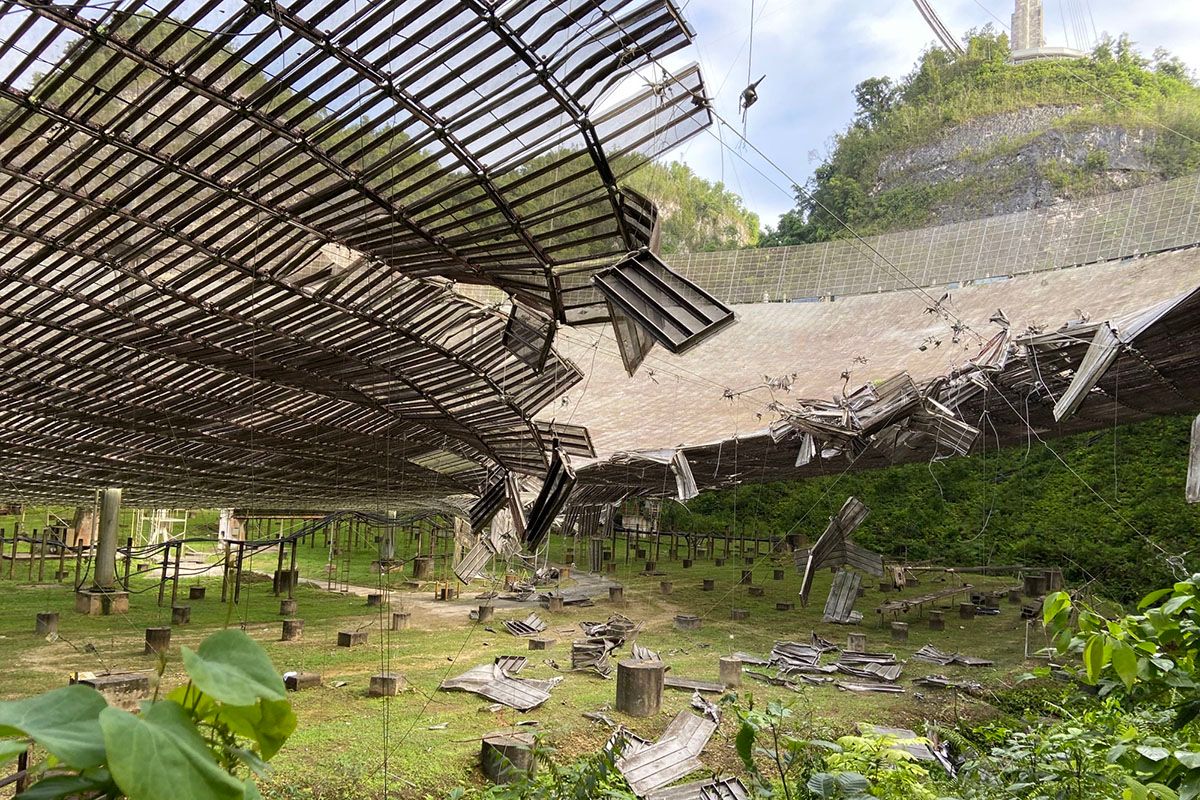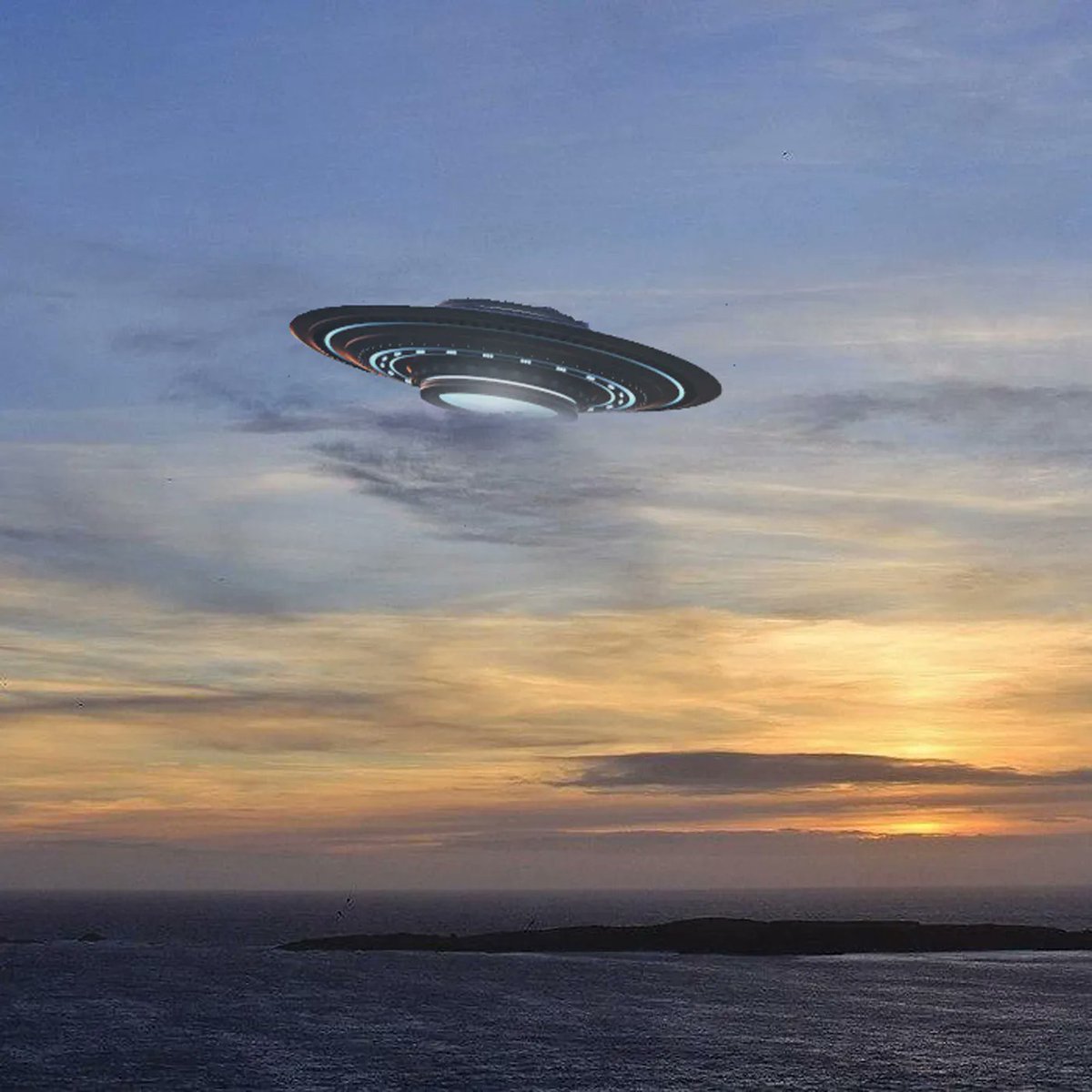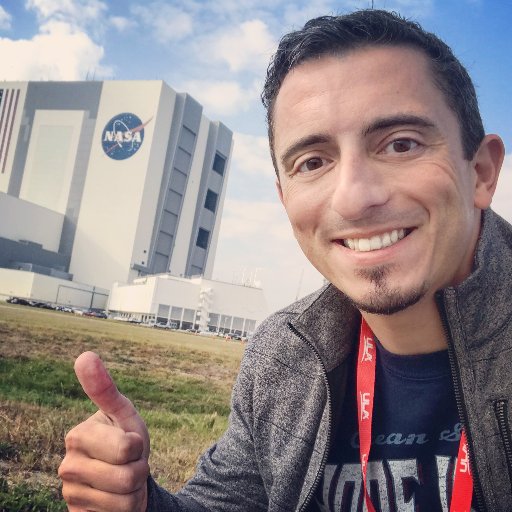
The SETI Institute
@SETIInstitute
Followers
702K
Following
8K
Media
11K
Statuses
25K
Our mission is to lead humanity's quest to understand the origins and prevalence of life & intelligence in the universe and share that knowledge. #notjustaliens
Mountain View, CA
Joined April 2009
Astronomers have found a #FRB that repeats on a regular cycle. Every 16.35 days, the signal named FRB 180916.J0158+65 follows a similar pattern. For four days, it will spit out a burst or two every hour. Then it falls silent for 12 days. @ScienceAlert
1K
11K
27K
#PPOD: Voyage of the Moons. Absolutely beautiful video created using still images from @CassiniSaturn. Shown are Io and Europa over Jupiter's Great Red Spot and Titan as it passes over Saturn and its edge-on rings. Credit: @NASA @NASAJPL @Caltech @spacescienceins @kevinmgill
78
1K
5K
#PPOD: The Tadpole Galaxy is a disrupted barred spiral galaxy located 420 million light-years from Earth in the northern constellation Draco. Its most dramatic feature is a trail of stars about 280,000 light-years long. Credit: @HubbleTelescope @esa @NASA @amalbiju_astro
48
502
3K
#PPOD: This spectacular composite photo of Comet C/2021 A1 (Leonard) was taken in Quebec during a frigid Canadian night in December 2021. The comet has spent most of the last 40,000 years inbound toward the Sun and will now exit our solar system. Credit: @optiquevideo
28
443
3K
#PPOD: Space Station Transit. The International @Space_Station captured while transiting the 4% illuminated #Moon during the daytime. 📷: @AJamesMcCarthy
22
370
3K
#PPOD: Located in Ophiuchus and rarely imaged, LDN 43 is a dark nebula consisting of very dense material blocking light from the background stars. Two cometary nebulae are found inside the dark nebula area, which looks like a flying bat. Credit: Mark Hanson and Mike Selby
61
386
2K
#PPOD: Astronomers have captured the first clear shot of a moon-forming disk around a distant exoplanet. Taken by @almaobs, this shows a wide view of the star PDS 70 (center), its circumstellar disk, and the planet PDS 70c with its own disk of material. @ESO @prcnaoj_en @TheNRAO
28
380
2K
#PPOD: Italy From Space. Buongiorno a tutti! Have a wonderful day and a 'favolosa' week. Credit: @NASA @esa @Space_Station
23
307
2K
Scientists have captured the first ever image of a phenomenon Albert Einstein described as "spooky action at a distance". Photo shows a strong form of quantum entanglement, where two particles interact and share physical states for an instant. @BBCNews
44
771
2K
#PPOD: Devil's Tower in Wyoming was formed when a shallow magmatic intrusion underground cooled slowly. The slow cooling caused columnar jointing or cracking in the rocks, which were revealed here once the surrounding sedimentary rock was eroded away. Credit: @MKiczenski
29
257
2K
Researchers at #BreakthroughListen – the initiative to find signs of intelligent life in the universe – have applied machine learning techniques to detect 72 new fast radio bursts emanating from the "repeater" FRB 121102. #SETI
29
1K
2K
#PPOD: This map of the Milky Way Galaxy shows the constellations that cross the galactic plane in each direction and the known most prominent components annotated including main arms, spurs, bar, nucleus/bulge, and notable nebulae. Credit: Pablo Carlos Budassi
23
434
2K
In a new paper, co-authored by Institute scientist @JeffLCoughlin, astronomers using @NASA Kepler data have identified a planet nearly the same size of Earth that orbits in its star’s habitable zone, where liquid water could exist. #Kepler1649c
21
330
1K
#PPOD: A lovely photograph of the conjunction of Venus (top) and Jupiter (bottom) over the Dolomites in Italy, seeming to land on the slopes of Mount Soratiera. The four smaller dots next to Jupiter are the Galilean moons Ganymede, Callisto, Europa, and Io. 📷 : Alessandra Masi
9
219
1K
#PPOD: Glimpse. Composite photo taken from White Sands, New Mexico. Credit: @JaxsonPohlman Photography
17
230
1K
#PPOD: An enormous bubble is blown into space by a super-hot, massive star in this image of NGC 7635, or the Bubble Nebula, which is 7 light-years across and resides 7,100 light-years from Earth in the constellation Cassiopeia. Credit: @NASA @esa @HubbleTelescope M. Hakan Özsaraç
7
192
1K
The crash is imminent: The Chinese experimental space station Tiangong-1 will fall uncontrolled to Earth on Sunday (April 1), give or take a day and a half. Does that mean you’re in danger of being struck? In two words? Not really. | @SPACEdotcom
95
752
1K
#PPOD: Perspective, perspective. This is #Saturn's north polar vortex. Processed using near-infrared filtered images of Saturn's north polar hexagon taken by @CassiniSaturn on November 27, 2012. Credit: @NASA @NASAJPL @Caltech @spacescienceins @kevinmgill
18
221
1K
Could aliens be visiting Earth? More than 800 reports of mysterious objects in our skies are being looked at by a special NASA panel. @BiPiSci speaks to one of the panelists about their approach. It’s “Skeptic Check: NASA UFO Study:” Listen here:
131
217
1K
This is our best look yet at the solar system's most volcanic object - A massive new report on Jupiter’s moon Io shows that the explosive world is even stranger than anyone expected. @NatGeo
18
269
1K
#PPOD: ISS from a Shuttle. This picture of the @Space_Station was taken as the Shuttle Endeavour headed home after the STS-118 Mission Date on August 19, 2007. Credit: @NASA
16
169
1K
@newscientist .If any alien civilisations have spotted the new supernova SN 2023ixf in the Pinwheel galaxy, they may use it to try to make contact.
35
158
1K
#PPOD: Photographer @YBeletsky captured the #HarvestMoon over Licancabur volcano in the Chilean Andes. This #stratovolcano rises to 5,916 meters and has a 400-meter crater at the summit which contains Licancabur Lake, one of the highest lakes in the world. Credit: Yuri Beletsky
11
200
1K
#PPOD. Here is #Saturn's tiny moon #Prometheus orbiting the ringed planet from just inside the F-ring. The image is a color composite made from images taken with @CassiniSaturn's narrow-angle ISS camera on April 13, 2007. CREDIT: @NASA @NASAJPL @Caltech #SSI @JPMajor
8
182
1K
#PPOD: While flying at 35,000 feet over the Gulf of Mexico near the Yucatan Peninsula, pilot Chris Holmes noticed and filmed a nearby supercell storm with extreme jets of unusual lightning. These Gigantic Jets are a relatively recent discovery and can reach 50 miles in altitude.
22
252
988
A little levity in these uncertain times. Artist unknown. If its yours, please let us know. Image: Sketch with two dinosaurs. One is watching a meteor coming at them and says, "An asteroid!" The second is looking away and says, "Let's get some toilet paper.". #WashYourHands
21
399
987
#PPOD: This incredible image captured by @CassiniSaturn from a distance of ~380,000 km shows stunning detail in #Saturn’s atmosphere. Clouds rise and sink and get stretched out, forming long valleys and ridges. Credit: @NASA @NASAJPL @Caltech @spacescienceins Alexis Tranchandon
20
178
971
#PPOD: Also known as NGC 7635, the Bubble Nebula is 7 light-years across – about one-and-a-half times the distance from our sun to Alpha Centauri – and resides 7,100 light-years from Earth in the constellation Cassiopeia. @NASA @esa @HubbleTelescope Processing: Allan Alaoui
11
163
954
.@NASA researchers have confirmed the existence in Titan's atmosphere of vinyl cyanide, which is an organic compound that could potentially provide the cellular membranes for microbial life to form in Titan's vast methane oceans. | @SPACEdotcom
11
436
890
#PPOD: Beautiful Saturn. This beautiful image features #Saturn in near-infrared, processed using data taken by NASA's @CassiniSaturn in July 2017. Credit: @NASA @NASAJPL @Caltech @spacescienceins #CICLOPS @kevinmgill
14
173
920
Astronomers have detected yet another mysterious and powerful fast radio burst hitting Earth from an unknown source in space. We don't know for certain what caused it or if there are different varieties of FRBs coming from different sources. @ScienceAlert
23
445
883
#PPOD: This spectacular image is a composite of two images. Jupiter and its Great Red Spot were captured by @NASAVoyager 1 on 4 March 1979, while the image of volcanic moon Io was taken by NASA's Galileo on 4 April 1997. Credit: @NASA @NASAJPL Björn Jönsson @uarizona
6
130
872
#PPOD: The otherworldly landscape of Iceland. The volcanic landscape of the Icelandic highlands almost seems like a different planet. Credit: @ibelegurschi Photography
10
138
856
#PPOD: @NASAPersevere took this picture of #Ingenuity perched on a sand dune, its final resting place after 72 amazing flights. Damage to the rotors has grounded the little companion. So long, little friend. You made everyone proud. Credit: @NASA @NASAJPL @Caltech @ASU @JPMajor
11
169
874
#PPOD: @NASAVoyager launched in 1977 and is now the most distant human-made object from Earth. Recently, after a communications issue, @NASA engineers spent six months and got Voyager correctly transmitting again. Truly a feat of human ingenuity. Credit: @DaveGranlund
14
239
897
.@apod 2019 Feb 18 - A huge dragon-shaped aurora developed in the sky over Iceland earlier this month. The display was so enthralling that the photographer's mother ran out to see it and was captured in the foreground. Credit: Jingyi Zhang & Wang Zheng
25
328
820
Astronomers using @almaobs have obtained an extremely high-resolution image showing two disks in which young stars are growing, fed by a complex pretzel-shaped network of filaments of gas and dust. @ESO @prcnaoj_en @TheNRAO
10
234
822
#PPOD: Exploring the universe from a backyard in Arizona! Astrophotographer @AJamesMcCarthy captured the @Space_Station slipping across the Moon's face as it flies by at 8 kilometers per second, appearing to gently kiss Tycho crater. What a shot! Credit: Andrew McCarthy
13
157
822
#PPOD: Shiprock is a geologic structure made out of volcanic breccia that solidified 750-1000 m underground about 27M years ago. It is located 17 km south of the town of Shiprock, New Mexico, within the Navajo Nation. In Navajo, it is called Tsé Bitʼaʼí. Credit: Marco Miglionico
10
145
798
This image of #Venus revisits the original Mariner 10 data with modern image processing software. A contrast-enhanced version of this view, also provided here, makes features in the planet's thick cloud cover visible in greater detail. @kevinmgill @NASAJPL
5
176
790
'Definitely Not Aliens': These Photos of SpaceX's Night Rocket Launch and Landing Are Amazing! - All rocket launches are spectacular, but @SpaceX took things to another level over the weekend. See more images: (@SPACEdotcom)
12
313
783
@SimpsonianT Let's say that we were more succinct than that about 2020 when we first saw the picture.
11
29
733
#PPOD: Astronauts onboard the @Space_Station love taking images of our planet from above, and here is the South Island of New Zealand. The South Island is divided by the snow-capped Southern Alps, which includes 18 peaks over 3,000 meters tall. Credit: @NASA
6
123
793
#PPOD: Behind a darker cloud is a pileus iridescent cloud, a group of water droplets that have a uniformly similar size and so together diffract different colors of sunlight by different amounts. Also captured were unusual cloud ripples above the pileus cloud. Credit: Jiaqi Sun
6
177
770
#PPOD: Astronomers used the @HubbleTelescope to photograph the iconic Horsehead Nebula in infrared light. Located 1,375 light-years away in Orion, the nebula appears transparent and ethereal when seen at infrared wavelengths. Credit: @NASA @esa / Hubble Heritage Team
6
108
726
#PPOD: A surface panorama from @ESA_Rosetta's @Philae2014 in its final resting place on Comet 67P/Churyumov–Gerasimenko. This surface panorama is comprised of two separate images. Depth cues were added by Mattias Malmer. CREDIT: @esa / Rosetta / Philae / CIVA / Mattias Malmer
18
144
741
Kalpana Chawla (17 Mar 1962 – 1 Feb 2003) was an astronaut and engineer and the first woman of Indian descent to go into space. Tragically, she was one of the seven astronauts aboard the Space Shuttle Columbia when it was destroyed upon re-entry. #AAPIHM
5
98
772
#PPOD: Andromeda Galaxy. This spectacular photo of our galactic neighbor, also known as M31, involved over 20 hours of exposure and additionally captured satellite galaxies M32 (left) and M110 (right). Credit: @GibsonPics
7
124
723
#PPOD: #Saturn's moon #Tethys orbits in front of the wide shadows cast by the rings onto the planet. Tethys appears just below the rings near the center of the image. The image was taken with @CassiniSaturn on Dec. 7, 2011. Credit: @NASA @NASAJPL @Caltech @spacescienceins
4
122
707
The weird hexagon swirling around Saturn's north pole is much taller than scientists had thought, a new study suggests. The bizarre structure actually extends about 180 miles (300 km) above the cloud tops, up into the stratosphere. | @SPACEdotcom @esa
17
297
694
#PPOD: This image was the winning entry in last year's Astronomy Photographer of the Year competition. Taken from France, the crescent world is Venus just before the Moon passes in front of it. @NLefaudeux used a Celestron C11 2800mm telescope to capture this moment. #photography
4
123
697
Subrahmanyan Chandrasekhar (19 October 1910 – 21 August 1995) was an astrophysicist whose groundbreaking work in stellar structure and evolution led to the award of the Nobel Prize for Physics in 1983. There are numerous concepts named for him. #AAPIHM
7
146
685
#PPOD: Pictured here is Saturn's moon Enceladus, its south polar plumes lit by sunlight and its seamed nightside washed with the yellow glow of the light coming from Saturn. Taken by @NASACassini on 30 November 2010. 🛰🪐. Credit: @NASA @NASAJPL @Caltech @spacescienceins @ugordan
13
142
680
#PPOD: Photographer @harrydurgin hiked up Pu'uhuluhulu cinder cone and patiently waited with friends to get this gorgeous and amazing picture of a cloud-covered Moon over the latest eruption of Hawai'i's Mauna Loa volcano. Mauna Loa had not erupted for 38 years.
9
199
703
Amazing graphic and a little thread.
Cool 3D rendering of the Milky Way galaxy by @StefanPWinc showing the curve of the galactic plane and dust using data from GAIA (ht @runnymonkey)
5
213
674
#PPOD: Merged view of the galaxy NGC 1566 composited from the @NASAWebb MIRI camera and an image taken by @HubbleTelescope. The result is absolutely spectacular and reveals the galactic structure in intricate detail. Credit: @NASA @esa @csa_asc @stsci @astrozsarac
12
123
674
#PPOD: This is the most accurate natural color image of Charon taken by @NASANewHorizons in 2015. This image was taken as New Horizons zipped toward Pluto and its moons on July 14, 2015, from a range of 35,445 kilometers. Credit: @NASA @JHUAPL @SwRI @Alex_Parker
8
126
666
#PPOD: Here is one of the most memorable aurora captured over the the South Pole of Earth. NASA's IMAGE spacecraft caught these views around 7 pm ET on July 26, 2004. Our planet's force shield is protecting all life beneath it in a magnificent display. Credit: @NASA @UCBerkeley
6
158
650
#PPOD: Enjoy @MarsCuriosity's view of Gale crater about two years ago. This site has such incredibly beautiful landscapes, but we've gone portrait mode for this one. Notice the rim of the crater in the background. Credit: @NASA @NASAJPL @Caltech #MSSS @thomas_appere #Mars
6
128
669
#PPOD: Here's a view of Earth beyond the Moon made from a photo taken during the #Artemis1 flight on November 28, 2022 when @NASA_Orion was 268,563 miles away from Earth. We're seeing the far side of the Moon here. Credit: @NASA @esa @NASA_Johnson Artemis Mission Team @JPMajor
1
171
656












































































































